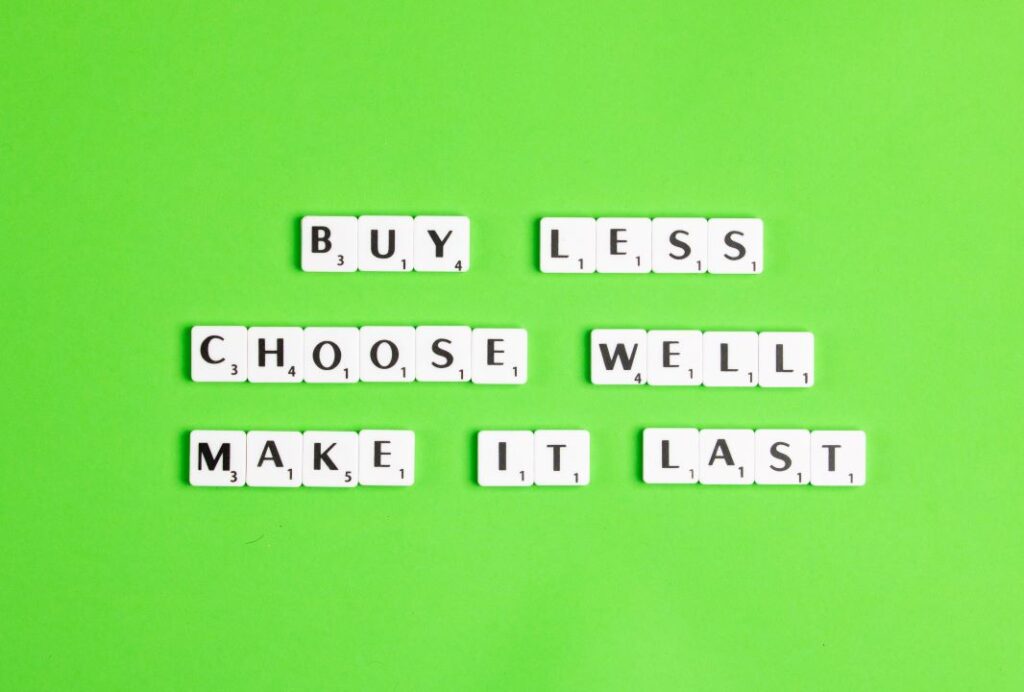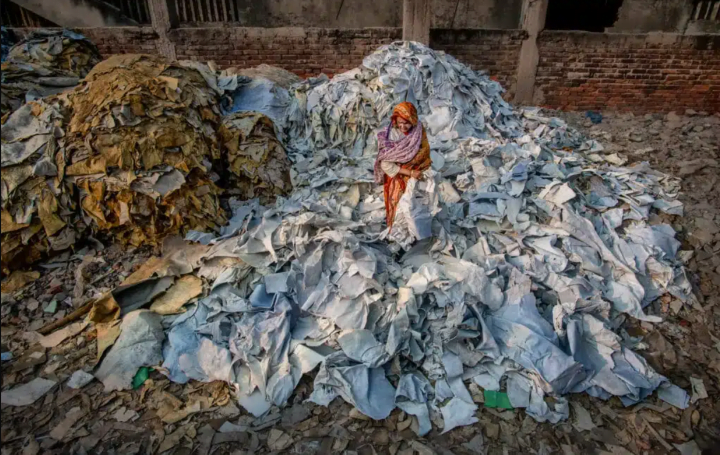
Introduction
In today’s fast-paced world, the fashion industry has undergone significant changes. The rise of fast fashion has revolutionized how we consume clothing, with new styles hitting the shelves at an unprecedented rate. However, with this rapid production comes a host of negative consequences for both the environment and society. As a result, an alternative approach to fashion consumption has emerged: slow fashion. In this article, we will explore the concept of slow fashion, its benefits, and why we should consider embracing it as a sustainable choice.
Table of Contents
Understanding Slow Fashion

Slow fashion can be seen as the antithesis to fast fashion. It emphasizes mindful consumption, prioritizing quality over quantity and promoting ethical production practices. Unlike fast fashion, which focuses on quick turnover and low-cost production, slow fashion encourages a more thoughtful and deliberate approach to clothing. It encompasses various principles, including fair wages for workers, sustainable materials, and minimizing waste throughout the supply chain.
The Environmental Impact of Fast Fashion

Fast fashion has a profound environmental impact. The relentless production of cheap garments contributes to pollution, water scarcity, and resource depletion. The use of synthetic materials and harsh chemicals further exacerbates the problem. Moreover, the disposal of fast fashion items often leads to landfill overcrowding or incineration, releasing harmful toxins into the environment. The carbon footprint of the fashion industry is staggering, surpassing that of international flights and maritime shipping combined.
Social Implications of Fast Fashion
Beyond its environmental consequences, fast fashion also has significant social implications. The race to produce clothing at the lowest possible cost often results in exploitative labor practices. Workers in garment factories endure low wages, long hours, and unsafe working conditions. Moreover, the demand for cheap clothing perpetuates a culture of disposable fashion, undermining the value of craftsmanship and perpetuating a cycle of exploitation.
Benefits of Slow Fashion
Embracing slow fashion offers numerous benefits that go beyond sustainability. Let’s explore some of the advantages it brings:
- Ethical Production: It prioritizes fair wages and safe working conditions for garment workers, ensuring that the clothes we wear are ethically produced.
- Quality and Durability: Ethical fashion garments are typically crafted with higher-quality materials and superior craftsmanship, resulting in more durable clothing that lasts longer.
- Timeless Style: It focuses on classic designs that withstand the test of time, reducing the pressure to constantly chase fleeting trends.
- Supporting Local Economies: By choosing Ethical fashion, we support local artisans, designers, and manufacturers, contributing to the growth of our communities.
- Personal Expression: It encourages us to express our individual style and creativity by investing in unique, well-crafted pieces that reflect our personality.
Overcoming Challenges in Adopting Slow Fashion
While the benefits of Ethical fashion are compelling, there are challenges to adopting this approach. Some of the common obstacles include:
- Higher Price Points: It often comes with a higher price tag compared to fast fashion due to the use of sustainable materials and fair labor practices. However, viewing it as an investment in quality and longevity can help shift our perspective.
- Limited Accessibility: Slow fashion options may not be as readily available as fast fashion brands, especially in certain areas. However, online platforms and dedicated sustainable fashion stores are increasingly offering wider choices.
- Mindset Shift: Transitioning from a fast fashion mindset to slow fashion requires a change in our perception of clothing as disposable commodities. Embracing a more mindful and intentional approach to shopping can help overcome this hurdle.
Tips for Embracing Slow Fashion
- Building a Capsule Wardrobe: Create a versatile collection of high-quality, timeless pieces that can be mixed and matched, reducing the need for constant purchases.
- Thrifting and Second-Hand Shopping: Explore thrift stores, consignment shops, and online platforms for pre-loved clothing. It not only helps reduce waste but also offers unique and affordable fashion finds.
- Supporting Sustainable Brands: Look for brands that prioritize sustainable and ethical practices. Research their supply chain, materials, and certifications to make informed choices.
- Clothing Maintenance and Repair: Extend the life of your garments by properly caring for them, such as washing them less frequently, repairing minor damages, and altering them to fit better.
Slow Fashion as a Sustainable Solution
Slow fashion offers a sustainable solution to the harmful practices of the fast fashion industry. By embracing slow fashion, we actively participate in reducing the environmental and social impacts of our clothing choices. It allows us to connect with the stories behind our clothes, appreciate the craftsmanship, and make choices that align with our values.
The Role of Consumers in Driving Change
Consumers play a crucial role in driving the shift towards Ethical fashion. By demanding transparency, supporting ethical brands, and reducing our consumption, we send a powerful message to the fashion industry. As more individuals choose slow fashion, brands will be incentivized to adopt sustainable practices to meet the growing demand. Together, we can create a more ethical and environmentally conscious fashion industry.
Conclusion
As the detrimental effects of fast fashion become more apparent, it is essential that we start thinking seriously about embracing slow fashion. By understanding its principles, benefits, and the challenges involved, we can make informed choices that align with our values. Slow fashion empowers us to be more mindful consumers, supporting a more sustainable and equitable future for the fashion industry.
FAQs
1. Is slow fashion more expensive than fast fashion?
While slow fashion may have higher price points compared to fast fashion, it’s important to consider the long-term value and durability of the garments. Slow fashion items are often made with higher-quality materials and superior craftsmanship, resulting in clothing that lasts longer.
2. How can I support slow fashion if it’s not accessible in my area?
While slow fashion may not be readily available in all areas, there are online platforms that offer a wide range of sustainable and ethical fashion options. Additionally, you can explore thrift stores and second-hand shops, which provide affordable and unique clothing choices.
3. Can slow fashion be stylish and trendy?
Absolutely! Slow fashion emphasizes timeless styles that transcend seasonal trends. By investing in classic, well-crafted pieces, you can create a stylish and versatile wardrobe that stands the test of time.
4. How can I make my clothing last longer?
To extend the lifespan of your clothing, practice proper clothing maintenance, such as washing garments less frequently, following care instructions, and storing them properly. Additionally, learn basic sewing skills to repair minor damages, such as loose buttons or small tears.
5. How can I encourage others to embrace slow fashion?
Lead by example and share your knowledge and experiences with others. Educate your friends and family about the harmful effects of fast fashion and the benefits of slow fashion. Encourage them to explore sustainable fashion options and offer resources and recommendations.
6. What are the most popular Slow Fashion Brands?
There are several popular slow fashion brands that have gained recognition for their commitment to sustainable and ethical practices. Some notable examples include Patagonia, known for its durable outdoor clothing and environmental activism, Everlane, which focuses on transparent pricing and ethical sourcing, and Reformation, a brand that combines stylish designs with sustainable materials and manufacturing processes. These brands have successfully carved a niche in the fashion industry by offering conscious consumers alternatives to fast fashion.
Also Read-The Evolution of Casual On Campus: Why Students Love Streetwear, Athleisure, T-shirt Dresses
2 thoughts on “Slow Fashion: Should We Start Thinking Seriously?”